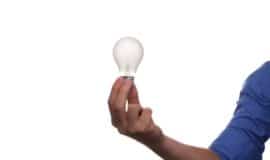Karen Haywood Queen
Smart Grid and Smart Cities
Our power grid is becoming smart. Solar power, wind power and energy storage are becoming more widespread. The smart grid has opened up the flow of both energy and information. Energy flow is no longer limited to one-way traffic from a central power generator to consumers. Now energy can flow back to a power provider from solar panels on consumers’ homes and consumers can sell energy back to the grid. But in some cases, the infrastructure cannot yet handle that two-way flow of energy. Researchers, regulators and energy providers are working to solve this problem. As more information flows from energy providers to consumers and from consumers back to energy providers, consumers are empowered to track their energy use and in some cases save money by using energy when demand is lower. A smart grid also makes it possible to restore power faster. If a tree falls on a power line, the energy provider in some cases can isolate the resulting power outage to only a handful of houses instead of several neighborhoods. For energy companies, the smart grid also means they don’t have to build as many plants to cover peak demand. The smart grid, because it’s now connected to the Internet, also is vulnerable to attack from hackers and hostile governments. I am energized covering all of these topics.


